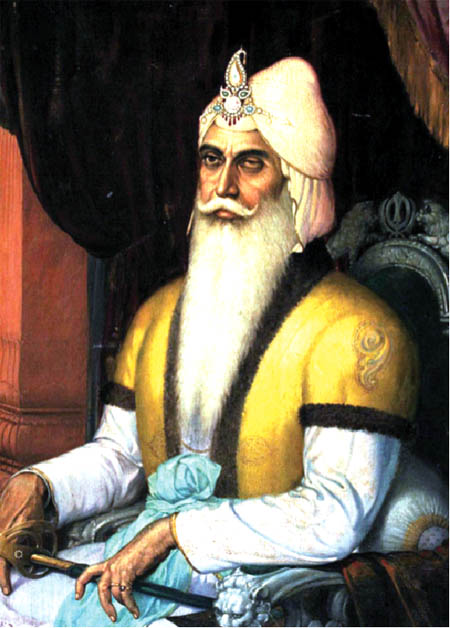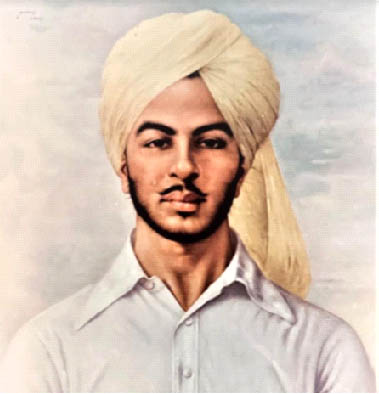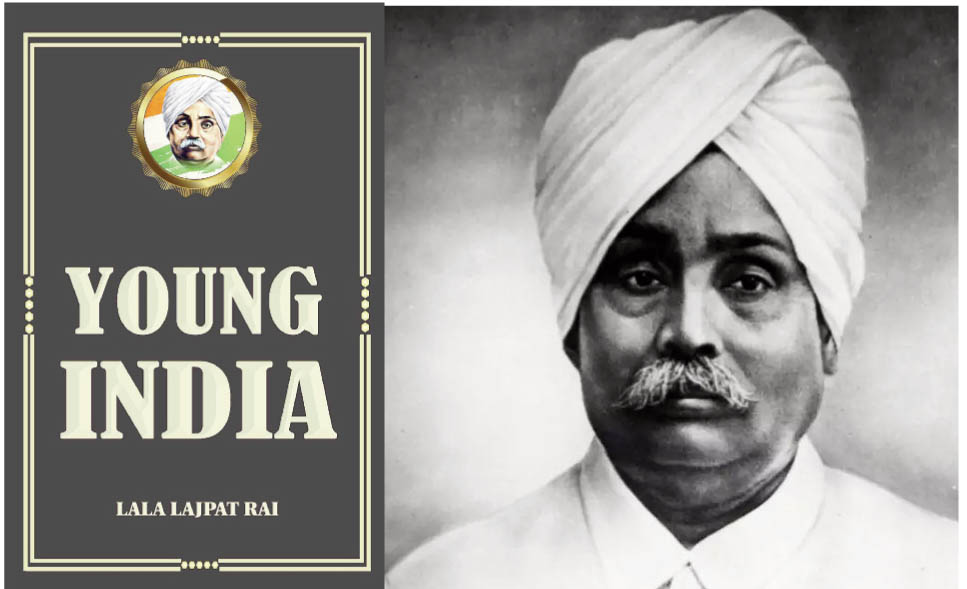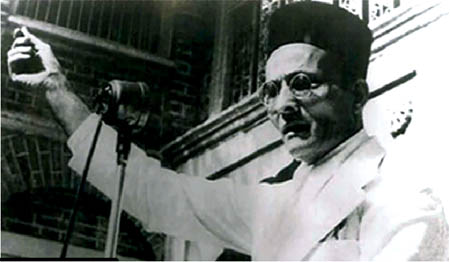The Indian diaspora has been an essential bearer of nationalistic emotions. In time of peace, it was the largest community of entrepreneurs. They have made their mark in almost all fields of life. Since prehistoric times they have crossed the borders to propagate religion, culture, learning and arts, thus widening trade and professions across the continents. The glory of India has spread due to their diligence and committed endeavours towards Bharat.
Bond With Motherland
In the course of time, due to colonisation, after a long saga of struggle, their success story stands out remarkably amidst the tales of torture, disrespect, indentureship, and subjugation. The call from the motherland has always remained sacred for the Indian diaspora. The bond always brought them closer to shared destinies. This has been the main reason that the freedom struggle for India was not only fought in India but also in nations which hosted Indians.
The struggle for freedom has been a combined effort where the diaspora community experienced the complexity of migrants’ experiences on one hand and the different degrees of emotions to which they feel connected to original societies. Like all other movements, the Indian diaspora is also the result of different waves of migration over hundreds of years driven by a variety of reasons-theology, religious tours, mercantilism, colonialism, brain drain and globalisation.

The destinies of India and the diaspora are intertwined. It is much required to acknowledge their efforts for a mutually contributed relationship. It’s time to hear these loud voices and react to their implications. In addition to human efforts, many organisations, memorials and events too contributed to raising the spirit.

Bhagat Singh is seen Bharat as an iconic martyr, but neighbouring Pakistan doesn’t consider him among the freedom fighters. It is important that the youth of the sub-continent is aware of sacrifice of such brave freedom fighter
The inclination towards nationalistic solipsism often disguises the complex set of global historical constellations, transnational political interaction and translocal ideological exchanges that are constitutive factors of most national movements. Fortunately, there are some exceptions to this rule, even among nationalists themselves. In his book Young India, the Indian political activist and historian Lala Lajpat Rai, for instance, acknowledged the formative impact of global factors on Indian nationalist politics. The book, published in 1917, contains a short chapter on the ‘World Forces’ that shaped the Indian national movement.
Acknowledge Unsung Heroes
By and large the narratives of freedom struggle have charted out few known endeavours and celebrated their contribution, but it does not recognise any other such attempts. Addressing this today becomes imperative, otherwise as a nation we shall fail in paying due homage to our freedom fighters in entirety.
The efforts chart out since the time of Maharaja Ranjit Singh. All types of efforts created an overseas fervour among the people emotionally affiliated with India. Some were inclined to spread patriotic connect through writings, others were portraying solid actions while many were engaged in supporting the entire struggle with money, networking, or strategic support. It’s high time that we recognise these efforts by the Indian diaspora. It’s been long that they have remained unsung or underrated. Their glory must be restored. It’s high time that their efforts are made public with references. Apart from individuals, several organisations too inspired monumental activities. So much so that memorials have been created out of these activities. Some buildings have become iconic in the course of time. Many times events too became landmarks in the history of the freedom struggle.
Bharatiya Freedom Fighters Forgotten By Neighbouring Nations
The diaspora endeavour in the freedom struggle is divided into different segments. Bharat, then undivided, witnessed efforts from many quarters and people. Today these people may be considered as other nationals or the diaspora. Countries like Afghanistan, Burma, Bangladesh, and Pakistan have been included because many freedom fighters have been forgotten by them. Bharat can never forget their contributions. Most highlighted here is the efforts by Bhagat Singh whom Bharat sees as an iconic martyr, but Pakistan doesn’t consider him among the freedom fighters. Similarly, some incidents triggered the struggle for freedom. These may also include books like Hind Swaraj.
Revolutionary Queen of Punjab
Maharani Jind Rani Kaur is considered to be the first revolutionary queen of Punjab. Due to her valour, she was called at that time as the ‘Lioness of Lahore’. She pledged that she would kill the British only by repulsing them. That is why she was considered the greatest enemy of the British. The biggest enemy of the British, this hernoine of Punjab was the youngest queen of Punjab Kesari Maharaja Ranjit Singh. When Maharaja Ranjit Singh died on June 27, 1839, rivers of blood were flowing in Punjab. The British were targeting Punjab. In such difficult circumstances, Empress Jind organised her army, gave them a powerful speech and encouraged them to fight for honour of the motherland. She declared her five-year-old son Dilip Singh as the king and took over the reins of governance and organised and worked.
Following In the Footprints of the Queen
Seeing her valour, Lord Dalhousie had said, “Rani Jind is more powerful than all the military power of the State.” She was imprisoned but she escaped to Nepal in the form of a sanyasi and met Begum Hazrat Mahal and Nana saheb. A detailed revolutionary action was planned by Queen Jind in Nepal to defeat the British but it remained incomplete. The reason was that in August 1883, at the age of 44, Queen Jind died suddenly. The Krantikaris were shocked, but by following the courage, valour and courage of Queen Jind, they finally succeeded in getting the motivation of the spirit of freedom of that revolutionary Queen.
INA was formed in Japan and its founder Rash Behari Bose was successful in convincing the Japanese Government to support the efforts. He later gave charge to Subhash Chandra Bose. Azad Hind Fauj was then nurtured by him. Parallel efforts were made by Jatindra Nath Mukherjee (also known as Bagha Jatin) who had a close meeting with German Crown Prince who assured to help freedom fighters overseas with finance and armoury in case of war. Bagha Jatin was successful in almost all prominent continents like the USA, Canada, and Europe through Jugantar to engage Indian freedom fighters.
Two younger brothers of Swami Vivekananda, Tarak Nath Das and Bhupendra Nath Das from California University and Georgetown University met Lala Hardayal. A South Asian Magazine Free Hindustan by Das became the mouthpiece of the Indian freedom struggle. This effort led to the formation of Gadar Party. Many prominent freedom fighters like Gurun Ditt Kumar, Harnam Singh, Professor Suren Bose, MN Roy, Vhampekraman Pillai and Virendra Nath Chattopadhya took the freedom struggle to wide acceptance by the community and governments.
Sarojini Naidu’s brother Vinerndranath Chattopadhya took charge of activities under Plan Zimmerman in Germany. This led to help for the freedom fighters in Germany, Italy and France. It’s worth mentioning that Sarojini Naidu notified the British against her brother’s activities. He was much sought after by Scotland Yard police.
There came a time when Jugantar leader Bagha Jatin came in contact with Gadar leaders and started fierce efforts. A planned activity began under the aegis of Rash Behari Bose and Bagha Jatin. There was an effort to form an Indian army of imprisoned Indians who could enter India from two sides, first from Arab countries and they planned to enter through Peshawar and from the second side in Thailand and Burma to enter Calcutta. However, this plan was sabotaged and failed.

In Young India, Lala Lajpat Rai acknowledged the formative impact of global factors on Indian nationalist politics. The book, published in 1917, contains a short chapter on the ‘World Forces’ that shaped the Indian national movement
This failure did not dampen Bagha Jatin and he continued efforts one after the other like Vessel Annie Larsen & SS Maverik, Czech counter espionage network and Spy ‘C’. The Singapore mutiny in 1915 has a special place in this list. For seven days the revolt continued, It surely unnerved the British Government. At the same time the Gadar movement continued. The Berlin Committee under Raja Mahendra Pratap Singh along with Maulana Barkatullah Khan was successful in forming the first free provisional Government in Afghanistan in Kabul on December 1, 1915. Many countries recognised the government including Germany, Austria, Hungry, Bulgaria and others. In Hindu-German conspiracy trial by the USA in 1917 many Gadar leaders were convicted in this connection. This formation of Government is neither widely talked about nor known. Most people think the Government formed by Azad Hind Fauj in Andaman by Subhash Chandra Bose was the first independent government. It was much later than the Kabul government.
This entire legacy impacted young minds of India including Bhagat Singh. There were many martyrs in World War-I & World War-II, who laid down their lives fighting for the British. Though they were not fighting for Indian freedom, they fought for the assurance of freedom for India. Their efforts need due mention. Two villages in France especially commemorate their martyrdom in the form of memorials. About 30,000 lives were sacrificed in those two villages while about one lakh soldiers laid down their lives in WW 1 and WW 11. These memorials are known as Neuve Chapelle Indian Memorial (France) and Indian War Memorial (France), INA and Azad Hind Fauz led to a number of noticeable incidents in India. Such as Naval Revolt 1946. This became a major threat to the British which they feared in 1857 like incident.
People, monuments, organisations, and events thus create a synthesised mosaic to portray the breadth and length of involvement of overseas Indians in the freedom struggle of India. Leaving other aspects and concentrating on human efforts shall make a study limited, hence an effort is initiated to record the role of Indian Diaspora in the struggle for freedom concerning people, places, memorials, and events who made distinguished contributions.
Its the time to pay homage to Madam Bhikaji Cama whom we pay tribute as the unfinished sonnet of women power, Maulana Muhammad Barkatullah – first Prime Minister of the Azad Hind Government, Venkatesa Subramaniam Aiyar (VVS Aiyar): the early Tamil freedom fighter in Europe, Madan Lal Dhingra: the Extended Pride, Lala Hardayal: The Father of Gadar Movement, Champak Raman Pillai – Hitler reprimand freedom fighter, Raja Mahendra Pratap – who created the Azad Hind Fauj, Manvendra Nath Rai – a revolutionary who was also a messiah of laborers, Rishikesh Latta – the founder of the Gadar Party, Sardar Kartar Singh ‘Sarba’ – who kissed the hanging at the age of 19 in a country that wasn’t his homeland. Among the associates of Gandhi prominent associates were Doctor Manilal (Manilal Maganlal Shah) in Mauritius and Fiji and Totaram Sandhya in Fiji. Their voices led to abolishment of many repressive acts of colonisers. Moreover they played a pivotal role in sending signals back home about the British atrocities, which impacted the freedom struggle and its intensity in India.
It’s also noteworthy that many freedom fighters deserve names from various countries from former undivided Bharat. From Pakistan Bhagat Singh as mentioned earlier was a daring figure, Mir Masti Afridi was a celebrity with achievement, and Jogendra Nath Mandal was a ray of hope for Bengali population in the Pakistan region. However, they are now forgotten by Pakistan but Bharat cannot ever repay their contribution to the freedom struggle.
From Bangladesh Basu Binoy Krishna was a man of revolutionary activities, Badal Gupta and his brothers as brave heroes as armed men, Dinesh Chandra Gupta as true hero, Suraya Sen full of bravery, Rokeya Sekhwat Hossain being the greatest woman personality, and Matangini Hazra the courageous woman can’t be ever forgotten.
From Burma there were Saraswathi Rajamani, a dedicated woman, Lakshmi Sehgal, a wholehearted woman, Janaki Thevar, a young enthusiastic girl, V Rathinam, an expert politician, who all made their commendable contribution.
There were several Indian diaspora organisations in the struggle for freedom which have become the epitome of freedom struggle. Some of them with their year of establishment are The First Vedanta Society (Branches of Ramakrishna Mission) (1894), India House (1904), India Home Rule society (India House) (1904), Abhinav Bharat (1906), Indian Independence (1907), Tolstoy Farm (1910), Gadar Party (1913), Indian Independence League (1914), Indian Independence League & Government (1915)
Among prominent memorials, these landmarks in various countries can never be forgotten in the freedom struggle: Tolstoy Farm (South-Africa), India House (London), The London India House (London), Apravasi Ghat (Mauritius), Neuve Chapelle Indian Memorial (France), Indian War Memorial (France), The Suriname Memorial (India), Gadar Memorial Hall (Yugantar Ashram) (USA), Gadar Party Martyrs Memorial Hall (Desh Bhagat Yaadgar Hall) (Punjab).
What better can be the time when India celebrates 75th year of Independence. The efforts rendered overseas by its diaspora must be commemorated in adoration. Let these narratives motivate many others who left the motherland and settled afar. Mahatma Gandhi’s struggle for ending institutionalised discrimination against Indians in South Africa became an inspiring legend for enduring sentimentalism about the diaspora in modern India. Shyamji Krishna Varma, Veer Savarkar, Madam Lal Dhingra and Lala Lajpat Rai were some of those whose tales have become living legends and they became immortal icons in the freedom struggle of India. Swami Vivekananda took it from words, Lalaji from writings, Savarkar, Dhingra and Gandhi through actions. They created a saga of models which became a vehicle for promoting the cause of Indian Independence among the political elites of major countries.
As the Independence movement gathered momentum at home, it began to influence many Indian communities abroad. Not limited to this, each one inspired other nations to choose the path of struggle as it suited their needs and calibre.

Veer Savarkar, along with other freedom fighters, created a saga of models which became a vehicle for promoting the cause of Indian Independence among the political elites of major countries
Among the overseas efforts, some mention of foreigners who played pivotal roles in the Indian Freedom Struggle must be mentioned here. Among the prominent ones are Annie Besant, who was inspired by the relentless struggle for Independence against British rule and gradually became an active part of it. Charles Freer Andrews played a significant role in persuading Gandhi to return to India with him in 1915. He took Gandhi to the Second London Round Table Conference and helped him negotiate with the British government on Indian autonomy and power transfer. Madeleine Slade, popularly known as Mirabehn, worked as a dedicated activist in spreading the spirit of non-violence and was considered an essential participant in the Indian independence movement by the British. Satyananda Stokes was an American who worked incessantly for India’s freedom and later settled in India. He was stunned by the Jallianwala Massacre when the British killed thousands of people. This incident changed his life, and he decided to join Indian politics. Sister Nivedita was an Irish woman, and a follower of Swami Vivekanand. After coming to India, she contributed to India’s struggle for freedom.
As we celebrate 75 years of Independence from colonial rule, it’s time to reflect upon the efforts and missions of the Indian diaspora which not only helped in raising the flame but also set an active stage for actions in a much needed environment. It created an extended uprising from all nooks and corners of the world and rendered the highest level of support in regaining freedom for India.
The narratives compiled here shall move the discourse further. The need of the hour is not limited to academics or research, it has crossed the notion of exposing the truth. Coherence is ensured so that they contribute to the objectives of nationalism, and we pay due respects to their struggles.




















Comments